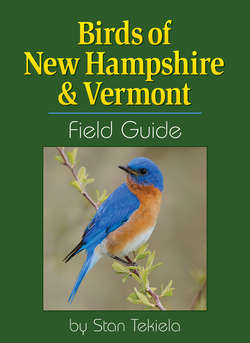Читать книгу Birds of New Hampshire & Vermont Field Guide - Stan Tekiela - Страница 17
На сайте Литреса книга снята с продажи.
How Do Birds Migrate?
ОглавлениеOne of the many secrets of migration is fat. While we humans are fighting the battle of the bulge, birds intentionally gorge themselves to put on as much fat as possible while still being able to fly. Fat provides the greatest amount of energy per unit of weight, and in the same way that your car needs gas, birds are propelled by fat and stalled without it.
During long migratory flights, fat deposits are used up quickly, and birds need to stop to “refuel.” This is when backyard bird feeding stations and undeveloped, natural spaces around our towns and cities are especially important. Some birds require up to 2-3 days of constant feeding to build their fat reserves before continuing their seasonal trip.
Some birds, such as most eagles, hawks, ospreys, falcons and vultures, migrate during the day. Larger birds can hold more body fat, go longer without eating and take longer to migrate. These birds glide along on rising columns of warm air, called thermals, which hold them aloft while they slowly make their way north or south. They generally rest during the night and hunt early in the morning before the sun has a chance to warm the land and create good soaring conditions. Birds migrating during the day use a combination of landforms, rivers, and the rising and setting sun to guide them in the right direction.
Most other birds migrate during the night. Studies show that some birds which migrate at night use the stars to navigate. Others use the setting sun, while still others, such as doves, use the earth’s magnetic fields to guide them north or south. While flying at night might seem like a crazy idea, nocturnal migration is safer for several reasons. First, there are fewer nighttime predators for migrating birds. Second, traveling at night allows time during the day to find food in unfamiliar surroundings. Finally, nighttime wind patterns tend to be flat, or laminar. These flat winds don’t have the turbulence associated with daytime winds and can actually help carry smaller birds by pushing them along.
